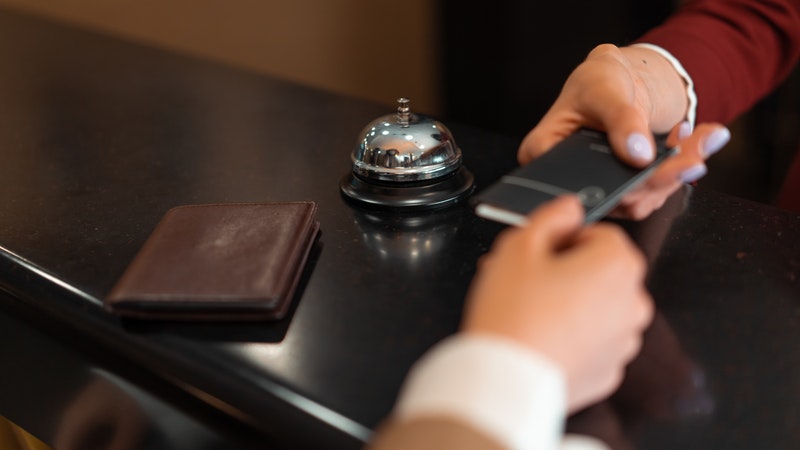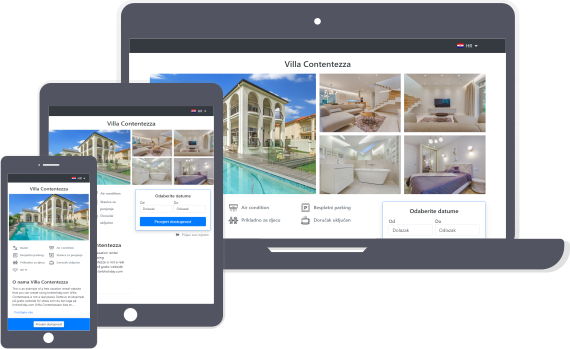Hotel Average Room Rate (HARR) Calculator
Est. reading time: 3 min
Are you wondering what your hotel average room rate is? Enter your revenue, the total number of rooms sold, and the number of free rooms in use to find out.
The room rate calculator will tell you what your hotel average room rate (HARR) was during a certain period.
Table of Contents
- Hotel Average Room Rate (HARR) Definitions
- Examples of HARR calculation
- How to correctly interpret HARR numbers?
- A Note on Complimentary Rooms

Hotel Average Room Rate (HARR) Definitions
Hotel Average Room Rate
The Hotel Average Room Rate (HARR) is the average revenue per room occupied during a period. It is calculated by dividing the total room revenue by the number of rooms that were occupied. The period is usually a day, a week, 30 days, a month, or a year. Complimentary rooms and rooms occupied by staff are included in the calculation.
HARR is similar to the Average Room Rate (ARR). The difference is that HARR calculations also include free rooms such as complimentary rooms and rooms used by staff. By including free rooms, HARR accounts for the effect these rooms have on the average room rate.
HARR, together with ARR, is used to see the effect that free rooms (such as complimentary and house rooms) have on the income generated from room rental.
Total Revenue
The total revenue is the revenue earned by selling the rooms. The revenue that is collected during the period for which you are calculating the room rate.
# of Rooms Sold
Rooms that were occupied and paid during the period for which the room rate is calculated.
# of Free Rooms
Rooms that were occupied but not paid for. Rooms that were rented free of charge (complimentary rooms) and rooms used by staff are examples of free rooms.
Period
Period refers to the period for which the HARR is calculated. Common periods are a week, a month, 30 days, or a year.

Create Your Own Vacation Rental Website
- Booking Calendar
- Multiple Languages
- Guest inquiries
- It's free to try!
Examples of HARR calculation
To calculate the Hotel Average Room Rate (HARR), you can use the formula:
| HARR = | Revenue |
| Paid Rooms + Free Rooms |
where Revenue is the total room revenue, Paid Rooms is the number of rooms that were occupied and paid for, and Free Rooms is the number of complimentary and house rooms used during the period for which the HARR is calculated.
If you are comparing HARR numbers, you should make sure to always use same-length periods, comparing weeks to weeks, months to months, and so on.
To compare ARR and HARR you have to use the numbers calculated for the same period, the same week, month, 30-day period, etc., to get meaningful results.
Using the formula above, we can calculate some common Hotel Average Daily Rates:
Example 1: Hotel Average Room Rate for a 30 Day Period
Your total room revenue during the last 30 days was $101700.00. 25 of your rooms were occupied by paying guests, and 2 of your rooms were occupied by complimentary stays. Then, you can calculate your hotel average room rate from:
| HARR = | $101700.00 |
| 25 + 2 |
which is equal to $3766.67, and is $301.22 lower than if you had no complimentary stays.
Example 2: Hotel Average Room Rate for a Week
Your room revenue for one week was $7861.00. You have 10 rooms that were occupied and paid for during that week and 1 complimentary room. Then, your hotel average room rate is given by:
| HARR = | $7861.00 |
| 10 + 1 |
which is equal to $714.64, and is $71.46 lower than if you had no complimentary stays.
Example 3: Hotel Average Room Rate for a Single Day
Similarly, for a single day with revenue of $700.00, and 5 occupied (and paid for) rooms, and 1 complimentary room, your hotel average room rate will be:
| HARR = | $700.00 |
| 5 + 1 |
which is equal to $116.67, and is $23.33 lower than if you had no complimentary stays.
How to correctly interpret HARR numbers?
HARR is often used in comparison with ARR, to determine the effect that free rooms have on ARR. When trying to make sense of your HARR numbers, there are two things you should keep in mind:
- You should always compare HARR calculated for periods of equal length. Always compare weeks to weeks, months to months, 30-day periods to 30-day periods, and so on...
- You should always compare HARR and ARR numbers for the same period. When you compare the same period, you correctly determine the effect that free rooms have on your average room rates.
A Note on Complimentary Rooms
Although free rooms like complimentary rooms and house rooms decrease your HARR, this doesn't automatically mean that they are bad for business: During slow periods, when a room would otherwise stay unoccupied, it might make good business sense to offer it as a complimentary room. You can do this to promote your business, boost guest satisfaction, or as a reward for guest referrals.
During high-demand periods the situation is different: The room could crate a nice revenue for you. You have to offset the value you might get back by giving the room away for free, with the potential income you will lose by not renting it out for profit.
In summary, utilizing complimentary rooms as part of your marketing strategy might be a good idea, especially during slow seasons. However, you should always take into account the potential revenue you might leave behind.